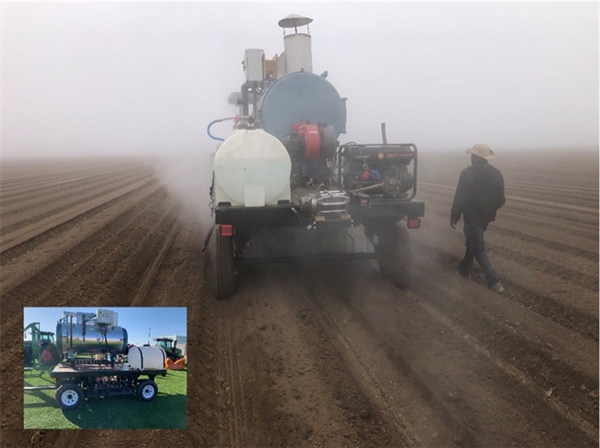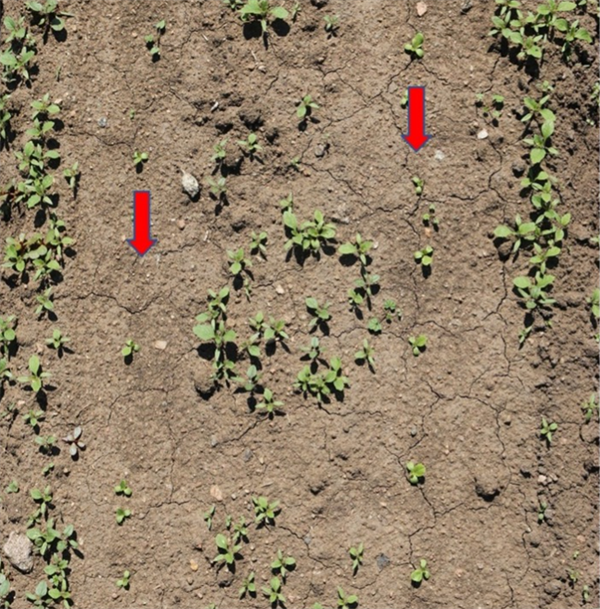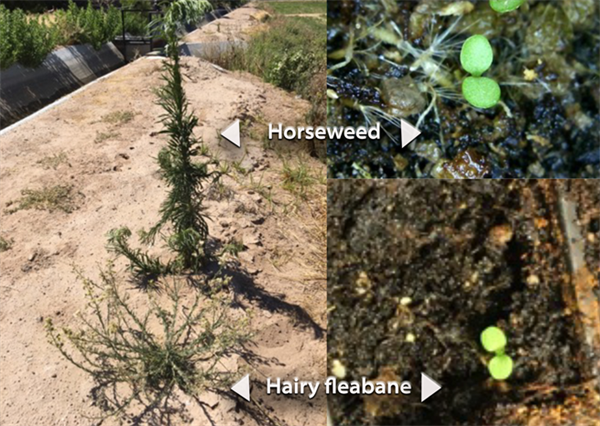
Rapidly changing conditions are a common feature in the agricultural arena. Things are in a constant state of flux in terms of climate, economics, methods of operation, etc. However, in the past few years, principally during the pandemic and post-pandemic times, changing conditions in agriculture for the desert Southwest have been extremely rapid and substantial.
Supply chain issues have been disruptive to many sectors of the economy and that has certainly affected agricultural operations. Things that have commonly been standard or easy things to manage in the past such as the simple need of replacing equipment or parts have become complicated and expensive.
We have become aware of fragile supply chains and the exposure of single points of failure that can have huge domino effects in many facets of our society, including agricultural industries. For example, during the pandemic it cost nearly $40,000 to move a shipping container from Asia to the U.S. and now things are starting to catch up and it has been reported that containers can now be shipped from Asia to the U.S. for less than $3,000.00.
Fertilizer prices for many materials have more than doubled in recent years, primarily due to basic supply and demand pressures. Fertilizer supplies have been subject basic economic pressures and further exacerbated by the war in Ukraine and the associated changes in natural gas supplies.
Fertilizer Supply and Cost
In a recent report from DTN market analysis (Formerly: Telvent DTN, Data Transmission Network) for the second week of November, retail U.S. fertilizer prices were not substantially different than in October but did have some slight variations with five fertilizers showing marginally lower prices than in October and three other key fertilizers tracking slightly higher. It is important to note that DTN designates a “significant” difference in prices with a move of 5% or more.
The five fertilizers that were marginally lower in price included monoammonium phosphate (MAP), potash, urea, 10-34-0, and anhydrous ammonia. Di-ammonium phosphate (DAP), urea ammonium nitrate (UAN)-28, and UAN-32 were slightly higher in price in mid-November, Table 1. Costs per pound of nitrogen (N) is shown for primary N sources in Table 2.
|
MAP |
Potash |
Urea |
10-34-0 |
Anhydrous |
DAP |
UAN-28 |
UAN-32 |
|
$978 |
$848 |
$812 |
$753 |
$1,415 |
$930 |
$584 |
$681 |
Table 1. Mid-November retail prices in U.S. markets for several fertilizers. Source: DTN
|
Anhydrous Ammonia |
UAN-28 |
UAN-32 |
|
$0.88 |
$1.04 |
$1.06 |
Frost and freeze damage affect countless fruit and vegetable growers leading to yield losses and occasionally the loss of the entire crop. Frost damage occurs when the temperature briefly dips below freezing (32°F).With a frost, the water within plant tissue may or may not actually freeze, depending on other conditions. A frost becomes a freeze event when ice forms within and between the cell walls of plant tissue. When this occurs, water expands and can burst cell walls. Symptoms of frost damage on vegetables include brown or blackening of plant tissues, dropping of leaves and flowers, translucent limp leaves, and cracking of the fruit. Symptoms are usually vegetable specific and vary depending on the hardiness of the crop and lowest temperature reached. A lot of times frost injury is followed by secondary infection by bacteria or opportunist fungi confusing with plant disease.
Most susceptible to frost and freezing injury: Asparagus, snap beans, Cucumbers, eggplant, lemons, lettuce, limes, okra, peppers, sweet potato
Moderately susceptible to frost and freezing injury: Broccoli, Carrots, Cauliflower, Celery, Grapefruit, Grapes, Oranges, Parsley, Radish, Spinach, Squash
Least susceptible to frost and freezing injury: Brussels sprouts, Cabbage, Dates, Kale, Kohlrabi, Parsnips, Turnips, Beets
More information:
Over the last several years, Dr. Steve Fennimore, Extension Specialist - Weed Science, UC Davis and I have been collaborating on investigating the use of band-steam for controlling in-row weeds and soilborne pathogens. Band-steam is where, prior to planting, steam is injected in narrow bands, centered on the seedline to raise soil temperatures to levels sufficient to kill weed seed and soilborne pathogens (>140 °F for > 20 minutes). After the soil cools (<1 day), the crop is planted into the strips of disinfested soil.
This spring, we completed fabrication of a second-generation prototype band-steam applicator that is simpler in design and easier to operate than our first prototype. Steve has been demonstrating the device to growers on their farms in the Salinas valley this summer (Fig. 1). Similar to Yuma trials, application of band-steam is being found to provide very good weed control in the treated band (Fig. 2). Stay tuned for reports of full trial results including hand weeding labor savings, control of Sclerotinia lettuce drop and crop yield in future articles.
The band-steam machine will be back in Yuma in a couple of weeks! If you are interested in testing the device on your farm, please contact me. I’d be happy to work with you.
Acknowledgements
This work is supported by the Crop Production and Pest Management grant no. 2021-70006-35761 /project accession no. 1027435 from USDA-NIFA. We greatly appreciate their support. Any opinions, findings, conclusions, or recommendations expressed in this publication are those of the author(s) and do not necessarily reflect the view of the U.S. Department of Agriculture.

Fig. 1. On-farm demonstration of a prototype band-steam applicator in Salinas,
CA. The machine injects steam into the bed in narrow beds centered on the
seedline prior to planting for control of weeds and soilborne pathogens. (Photo
credits: Steve Fennimore, UC Davis)

Fig. 2. Weed control with band steaming in lettuce. Steam was applied
in a 4-inch band centered on the two seedlines marked by the red
arrows. The weeds outside of the treated band are in areas that were
not steamed, but can be cultivated out easily because they are not
close to the crop seedline. Trials conducted by Steve Fennimore, UC
Davis, in 2022 in Salinas, CA. (Photo and caption credits: Steve
Fennimore, UC Davis).
Hairy fleabane is a summer annual weed from the Asteraceae family and occasional biennial in our area found in cultivated areas and citrus orchards, alfalfa fields, roadsides and ditch banks, landscapes and around buildings. The seedlings are oval to egg shaped and very similar in size (~0.4-0.8mm) to horseweed (Conyza canadiensis), which makes it very hard to distinguish one from the other in the field.
Hairy fleabane grows about 4 feet, branches from the bottom and leaves are pubescent also stems are covered with stiff hairs. The growth habits of horseweed (marestail) are different in that they grow up to 10 feet tall and branches from the upper half of the plant.
You can find Fleabane flowering right now in the Yuma area especially the Yuma Mesa. The IPM Team has received calls from our friends PCAs and growers stating that the Fleabane survives the application of Glyphosate, which has been reported for both conyzas. So, we got some trials in progress looking for options to control Fleabane as well as other weeds that have shown tolerance to Roundup such as White sweet clover or malva in different crops.
The results from the evaluations will be shared in this newsletter.

Reference:
1. UC/IPM Retrieved from http://ipm.ucanr.edu/PMG/WEEDS/hairy_fleabane.html
Results of pheromone and sticky trap catches can be viewed here.
Corn earworm: CEW moth counts remain at low levels in all areas, well below average for this time of year.
Beet armyworm: Trap increased areawide; above average compared to previous years.
Cabbage looper: Cabbage looper counts decreased in all areas; below average for this time of season.
Diamondback moth: DBM moth counts decreased in most areas. About average for this time of the year.
Whitefly: Adult movement beginning at low levels, average for early spring.
Thrips: Thrips adult counts reached their peak for the season. Above average compared with previous years.
Aphids: Aphid movement decreased in all areas; below average for late-March.
Leafminers: Adults remain low in most locations, below average for March.